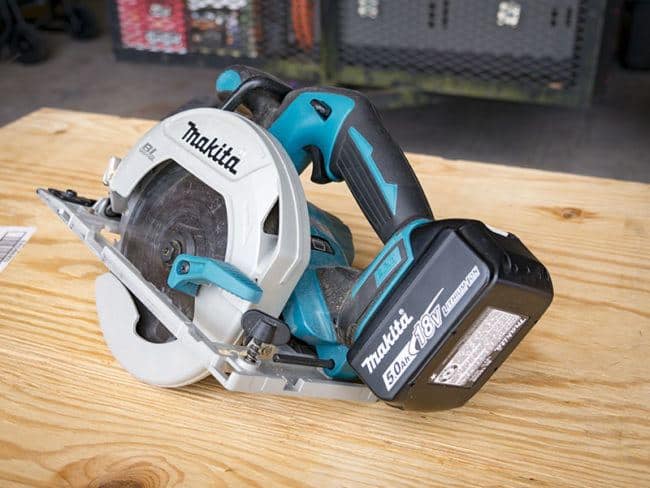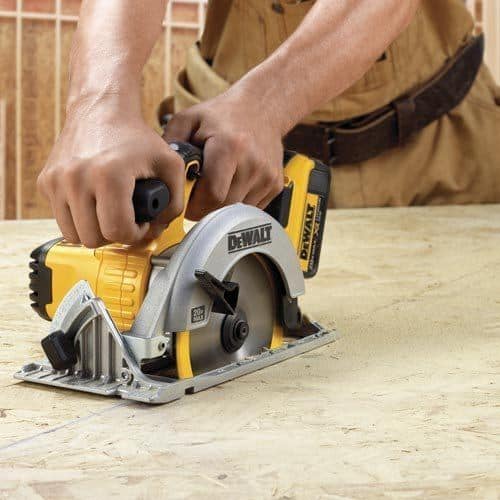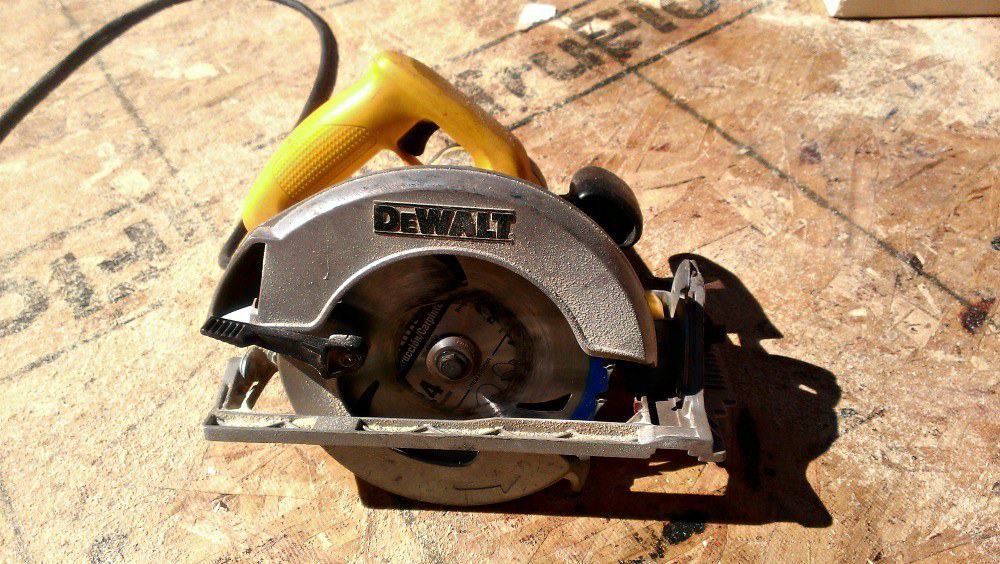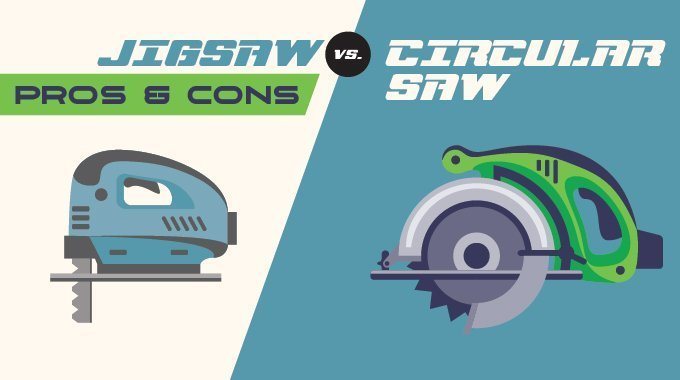9 Types Of Circular Saws & Their Usage – Guide
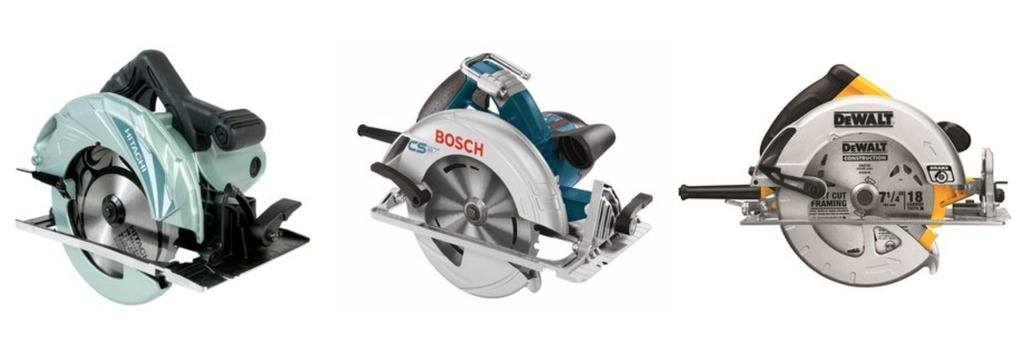
Circular saws are essentially any saw that uses a circular blade. That said, there are many types of circular saws on the market. Each type has a different use, and it’s essential to match the right type of circular saws with each project. If you don’t, you’ll get unreliable results and waste time, money, and effort. In this post, we’ll look at the nine basic types of circular saws so that you can always choose the right option.
The 9 Different Types Of Circular Saws
1. Worm Drive Circular Saws
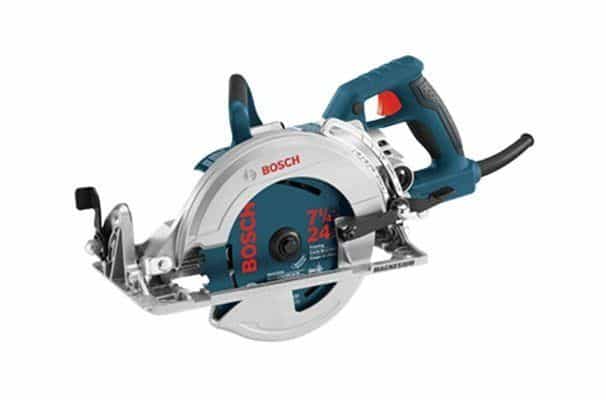
Worm drive models are very common circular saws. The primary difference between these saws and the others is the mounting of the motor and arrangement of the gears.
The saw is longer because the motor is at the back. The blade is also slimmer and longer than your average circular saw. The blade is usually on the left side of the motor. This arrangement puts the bulk of the weight on the right-hand-side. If you’re a lefty, this could be problematic.
The big advantage is that the gear arrangement of worm drive circular saws produces a lot more torque. This extra kick comes at the cost of some speed, but it’s a reasonable trade-off when you need more power.
This design is ideal for plunge-cutting and for when you need to cut wider lumber. The placement of the motor also makes it easy to see where you’re cutting.
On the upside, these models are among the most durable. On the downside, they’re clunky and can feel cumbersome in hand.
2. Sidewinder (In-Line) Circular Saws
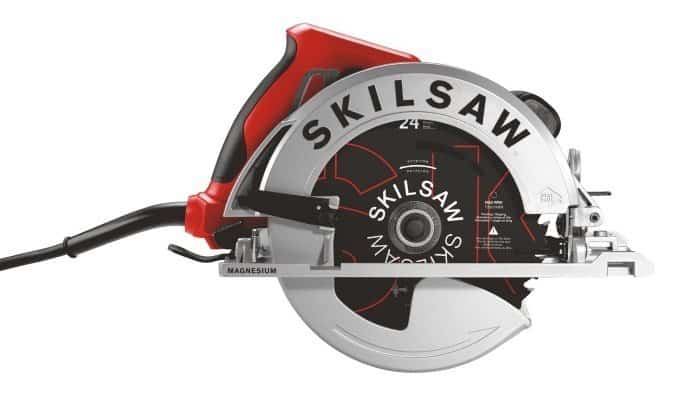
Also known as in-line saws, sidewinders are more compact. The main reason is the parallel mounting of the motor. The motor is parallel to the side of the saw and blade, to the left of the blade.
As the motor effectively lines up with the blade, the saw is more compact. It’s far more user-friendly because it’s lighter. If you hate oiling up circular saws, look into getting a sidewinder. It doesn’t require oil at all because it has a closed-off motor.
With the motor on the left, the heaviest part of the saw balances on the workbench side of your project. This arrangement lends extra stability and makes it easier to make accurate cuts.
The overhead cutting style does slightly obstruct the work surface, but you can adjust for this. These saws are very versatile and ideal for those situations when you need to cut fast.
They don’t quite have the brute force of a worm drive model, but they’re powerful enough for general projects. They’re suitable for work on-the-go and can handle projects of most sizes. If you’re cutting denser wood, choose a worm drive instead.
Related: Learn the difference between worm drive and sidewinder saws.
3. Hypoid Circular Saws
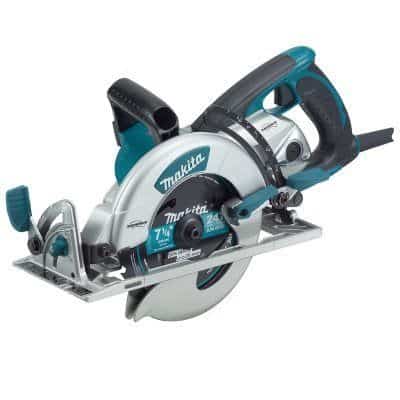
Don’t mistake these circular saws for worm drives. The position of the motor is pretty much the only similarity. What makes these models different is the gear alignment and transmission. These models don’t require oil because the motor is completely sealed.
This type of circular saw features Hypoid gears. These gears have a slightly offset spiral and meshing gear and are at a 90-degree angle to the axis. This combination improves the contact between the blade and your project.
Thanks to this improved alignment, the torque is better, and the cuts are more efficient. You can get away with a smaller motor as a result.
The motor is to the left of your blade, making it easier to see the cutting line. This model is more potent than a sidewinder and so better suited to projects that require more torque. If you’re cutting dense, wet, or thicker pieces of lumber, consider one of these.
4. Abrasive Circular Saws
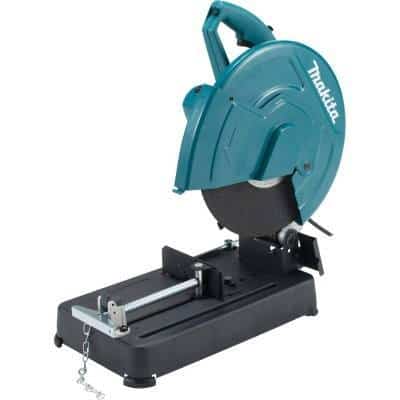
The blades of abrasive circular saws are their main differentiating factor. Instead of teeth that chew through the material, the edge of the disc is smooth. These models work by using friction versus a toothed cutting edge.
The blades slice through hard-to-cut materials. The best options have a diamond or cubic boron nitride-edging. If you’ll be doing a fair amount of cutting, it’s worth investing in more expensive blades. This type of work is hard on blades, and cheap blades wear out very fast.
The design depends on what you’re using the saw for. Those used for cutting metal and tiles often use a table saw setup. On the other hand, those designed for cutting asphalt, concrete, and pipes look similar to sidewinders.
Whatever the setup, operating these models is different. Instead of moving the blade along your material, you pull it toward you. This change makes accurate cuts a lot easier.
5. Biscuit Joiners
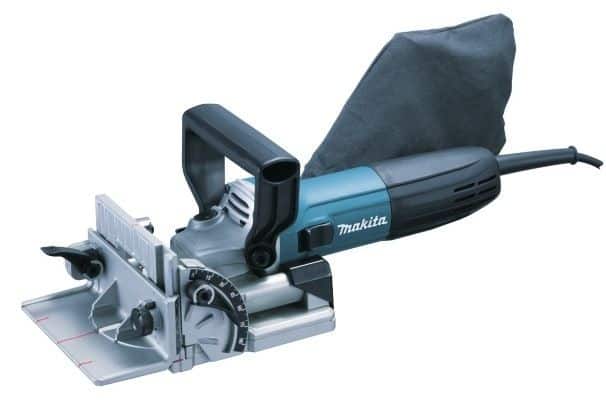
Biscuit joiners, despite their quaint name, are quite useful. You’ll use them to join pieces of lumber without leaving visible marks. The saw, in this case, is usually smaller and lighter than other circular saws.
This a specialized piece of equipment, so it’s not quite as versatile as the other types. That said, if you do a lot of cabinetmaking or joinery, you might find it a worthwhile investment.
It operates simply enough. Line up the pieces of wood you want to join. Lightly mark where you want them to join. Then move them apart again and line up your biscuit joiner with the first piece. Cut the first slot at the marked line. Then repeat with the second piece of wood.
You’ll end up with the two edges, each having a small slit in them. The actual joint is created by a small piece of wood known as a biscuit and strong glue. Apply the glue and insert the biscuit. From there, join it as you would a tongue and groove joint.
6. Carbide Circular Saws
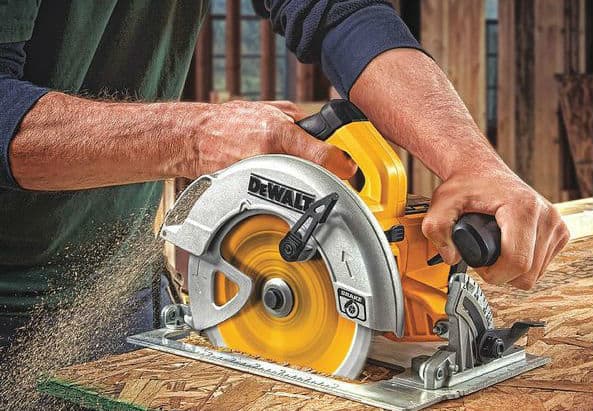
The carbide in the title here refers to the blade itself and the material from which the blade is made. These blades are tough and can cut through metal easily. For regular lumber projects, this saw is overkill. If you’re cutting a lot of metal, or very dense wood and other materials, it might be worth it.
These saws come in one of three setups:
- Horizontal: To be used in a similar way to a billeting saw. The horizontal type is the type you’ll usually come across.
- Vertical: This setup makes it possible to stack your material so you can cut more than one piece at a time. This can be a useful time-saver.
- Pivot: You can use this model as either a layer saw, or a billet saw.
Whichever setup you choose, the primary advantage of these saws is that the design is heat efficient. Thanks to this, the cut edges stay relatively cool despite the friction. The cooling factor also allows for longer cutting times.
7. Concrete Circular Saws
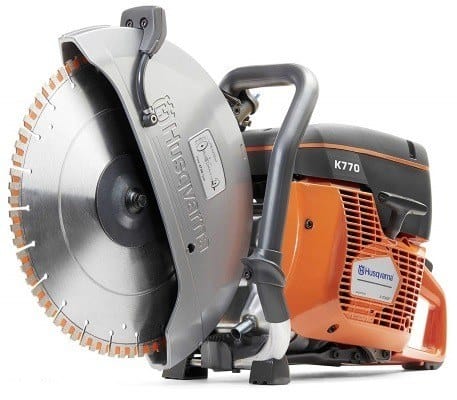
You might also find these models labeled as slab saws. They can look like chop saws or come in a handheld setup. If you’re taking on heavy-duty projects, pairing a diamond-tipped blade with these models will allow you to cut through almost anything.
The saw itself is powerful. Changing out the blade type makes it more versatile. It’s not the best option for light-duty projects, because the powerful motor is tough on blades. The blades spin faster here, so you get more friction and heat, and so more wear and tear on the blades.
So, you’ll either have to work in short bursts, allowing the material to cool down periodically, or use water to cool the material. Water does reduce the dust kicked up, so that’s a plus.
8. Flip-over Circular Saws
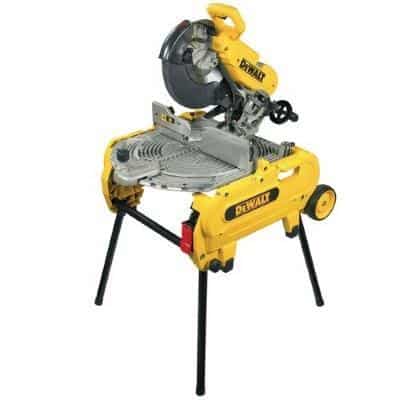
These models are useful for general carpentry projects. They’re a hybrid between a table saw and a miter saw. The hybrid design makes these saws extremely useful. The blade is mounted, so all you have to do is put the saw into place and feed your material through.
The type of circular saw blade dictates what materials you can cut with this saw. If you do a lot of framing, you might find the miter saw function useful. This function allows you to create perfect mitered joints quickly.
These models rank among the most useful for the general carpenter and home DIYer. As they’re mounted, they don’t require a lot of strength to control. You can work for longer before fatigue sets in.
The downside is that they do take up more space in the workshop than the typical handheld model.
9. Metal Cutting Circular Saws
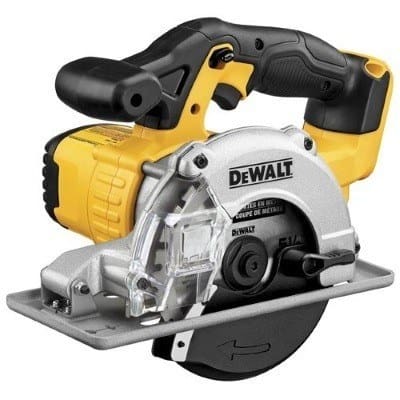
As you might expect from the name, metal cutting saws cut through metal. These saws are usually smaller than your average worm drive saw. They’re also usually a lot more powerful.
The design is more heat efficient. More importantly, perhaps, it also offers the user some protection against metals shards and sparks.
The downside is that the saw cuts at a reduced speed. A reduction in speed is a good thing when you’re cutting metal. Lower RPMs mean less friction and heat build-up. It might, however, feel somewhat excruciating when it takes longer to cut plywood.
The upside is that these saws are usually more compact. They use smaller blade housings, and this reduces the overall size.
Conclusion
That wraps up our introduction into the different circular saws and what their specific uses are. These are flexible and powerful tools when used correctly. Mismatching the type of saw and your project can be frustrating. Fortunately, now, you have a starting point.
Related Posts:
About the Author David Vieria
David has been a woodworker for most of his life — in his dad’s cabinet shop. After using the tools himself, he decided to share it his woodworking and power tools knowledge with DIYers. Read more about him

